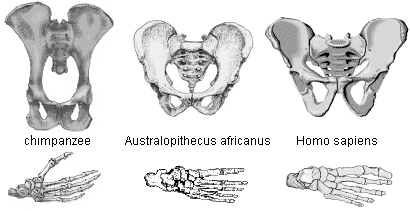Jason said:
... there are several mathematical models that describe the process. The most fundamental is the Hardy-Weinberg Equilibrium equation. It is the primary mathematical null hypothesis for evolutionary theory and describes allele frequencies with the equation:
p² + 2pq + q² = 1
Where p is the frequency of allele "A" and q is the frequency of allele "a"
The model shows that evolution will not occur in a population if seven conditions are met:
1. mutation is not occurring
2. natural selection is not occurring
3. the population is infinitely large
4. all members of the population breed
5. all mating is totally random
6. everyone produces the same number of offspring
7. there is no migration in or out of the population
1) If mutation occurs, the allele frequencies will change.
2) If there is a selection event on the trait (e.g. drought, habitat destruction, etc) the allele frequencies will change.
3) If the population is infinitely large, the allele frequencies will equal infinity; clearly ALL populations of organisms are finite.
4) Breeding is competitive and rarely if ever do 100% of the members of a population breed and produce offspring. If some members are more successful than others at breeding, allele frequencies will change.
5) If mating is non-random, those individuals who have more offspring will increase their allele frequency in the population; traits that favor reproduction will out-pace those that do not and allele frequencies will change.
6) If various breeding pairs produce more or less offspring than others, allele frequencies will change.
7) If members of the species from other populations migrate into the population (or breeding members migrate out) the allele frequencies will change.
"Let us assume that there is a trait that is determined by the inheritance of a gene with two alleles--B and b. If the parent generation has 92% B and 8% b and their offspring collectively have 90% B and 10% b, evolution has occurred between the generations. The entire population's gene pool has evolved in the direction of a higher frequency of the b allele--it was not just those individuals who inherited the b allele who evolved."
The Hardy-Weinberg Equilibrium equation is a useful null hypothesis to test because it assumes there is NO evolution occurring in a population. A violation of any one of the above conditions will result in a change in allele frequencies which rejects the null hypothesis and therefore demonstrates that the population has evolved. And it has been demonstrated literally THOUSANDS of times.
Google "population genetics" for a much more detailed look at the mathematical tools used by evolutionary biologists. In particular, the Berkeley site."




